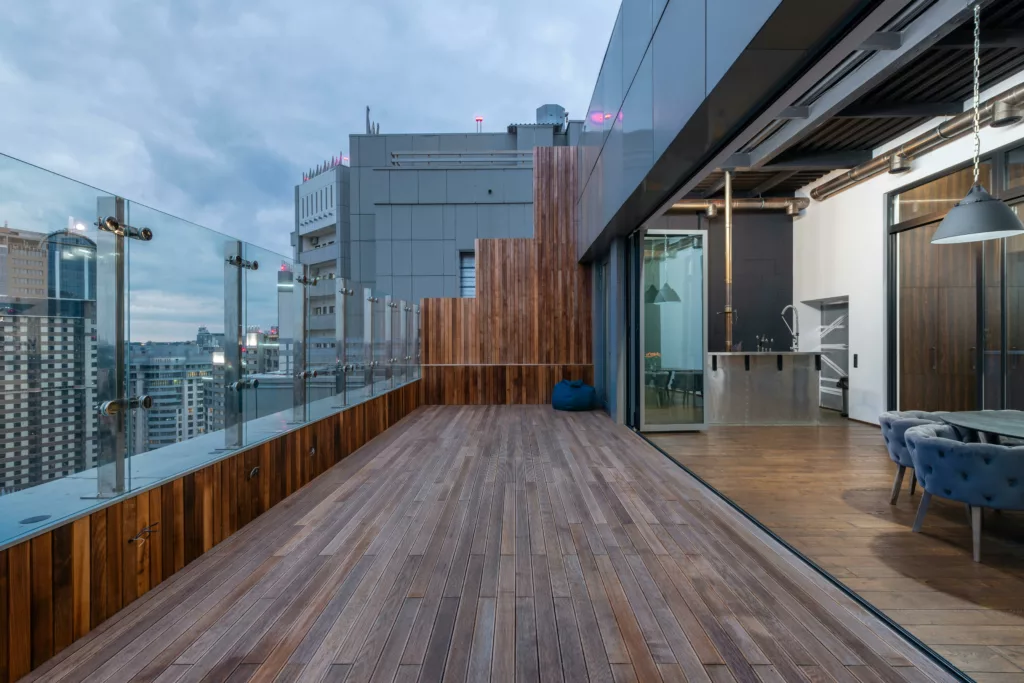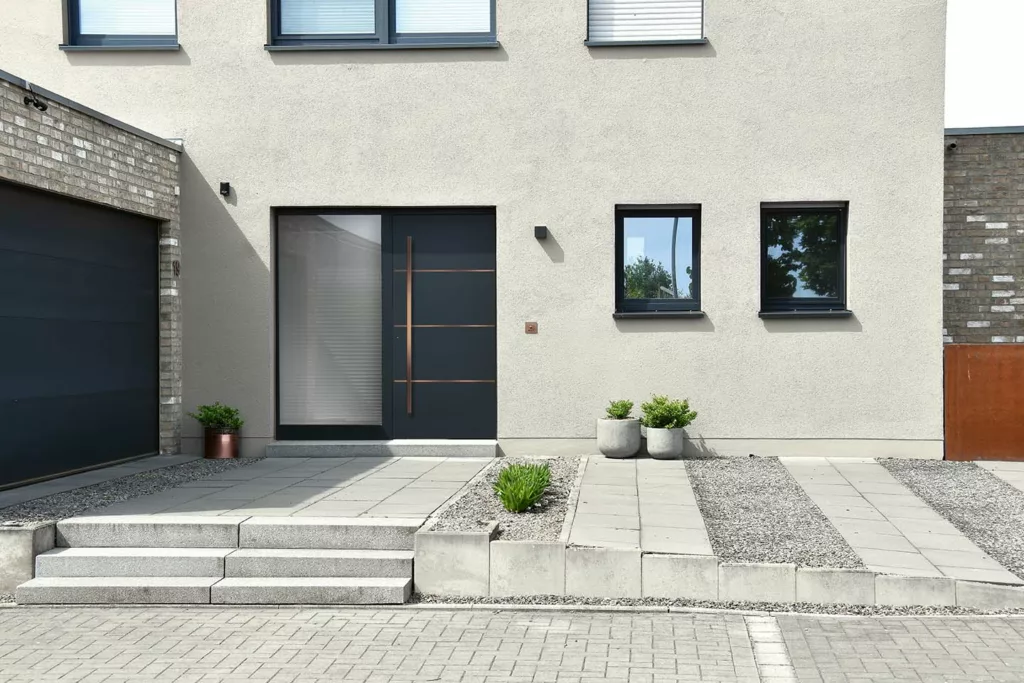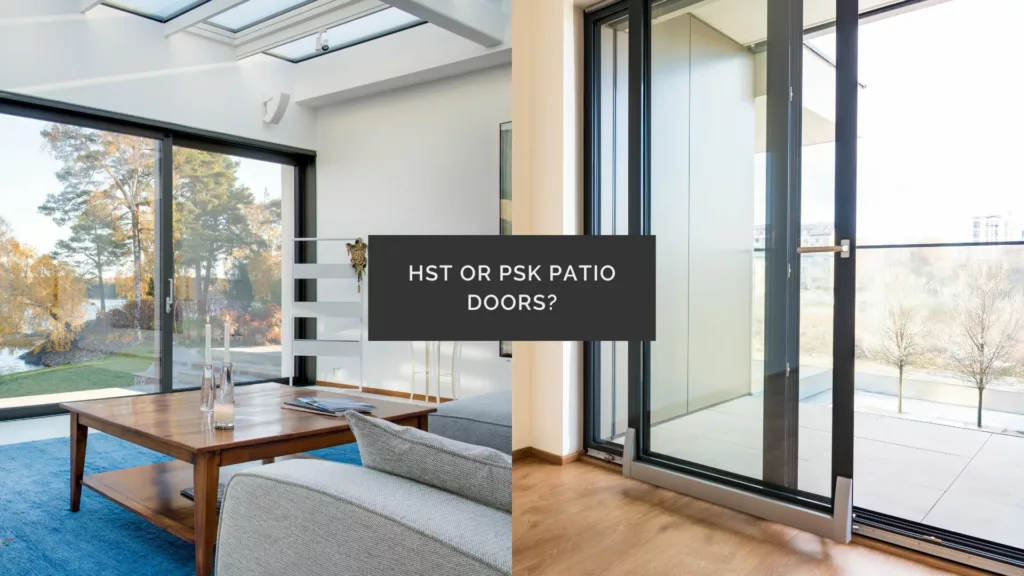Choosing Windows for Your Passive House: Is Triple Glazing Enough?
Have you ever wondered why, despite insulated walls, your heating bills keep rising? The secret might lie in your windows – the biggest source of heat loss in any building. According to research by the Building Research Institute, windows account for up to 25-30% of energy losses, and choosing the right glazing unit determines over 80% of the thermal performance of the entire window. In 2025, the European market is undergoing a revolution – new building regulations require a heat transfer coefficient of Uw ≤ 0.9 W/(m²K), which practically eliminates traditional double-glazed windows from residential construction.

How glazing units work and why it matters
A glazing unit is far more than just several panes of glass bonded together. It’s a precisely engineered insulating unit where every component plays a crucial role. The construction consists of two or more glass panes separated by spacer bars and hermetically sealed. The space between the panes is filled with noble gas – argon or krypton – which has significantly better insulating properties than air.
Understanding efficiency comes down to three fundamental parameters. The Uw coefficient determines the insulation of the entire window and is what decides compliance with regulations. The Rw coefficient measures sound protection in decibels – standard units achieve 32-36 dB, special acoustic ones reach up to 45 dB. The g-value expresses solar energy transmittance – high means free heating in winter, but can lead to overheating in summer.
The hidden enemy – thermal bridge at the glass edge
A critical element, often overlooked by investors, is the spacer bar. Traditional aluminum spacer bars are excellent heat conductors, creating a thermal bridge around the entire perimeter of the glazing. The result? Local cooling, water vapor condensation, and in the long term, risk of mold growth.
The solution is a warm edge spacer made from polymer composites. It can improve the Uw coefficient of the entire window by up to 0.1 W/(m²K) – the difference between meeting the standard and exceeding it. In the context of fighting for compliance with requirements, this is a huge and relatively inexpensive improvement.
Double glazing – why it’s becoming obsolete
Double glazing was the standard for decades, but times have changed. With a Uw coefficient of 1.1-1.4 W/(m²K), it
Since 2021, double-glazed units can only be used in unheated spaces: garages, basements, utility buildings, and seasonal summer cottages. Their main advantage remains lower cost and reduced weight, but the disadvantages far outweigh the benefits – high heat loss, poor acoustic insulation, and the “cold glass” effect in winter.
Triple glazing – the new energy efficiency standard in 2025
Building regulations have radically transformed the window market. A triple-glazed unit with argon and Low-E coatings has become the new standard, achieving a Uw coefficient of 0.7-0.9 W/(m²K). This makes it not only legally compliant but also eligible for all subsidy programs.
Construction and real benefits
A standard triple-glazed unit consists of three glass panes, two spacer bars, and two chambers filled with argon. On the internal surfaces, invisible Low-E low-emissivity coatings are applied, which act like a selective mirror – they allow sunlight to pass through but reflect thermal radiation back into the room.
Real savings? Replacing old double-glazed windows with triple glazing can reduce heating costs by 25-30% annually. For a standard home, this means €130-195 in annual savings and return on investment within 10-15 years, or even 6-9 years with subsidies.
External condensation phenomenon – a sign of quality or defect?
Users often report condensation forming on the external surface of the glass. This is not a product defect – quite the opposite, it’s physical proof of extremely high insulation performance. The unit blocks heat escape so effectively that the outer pane remains cold and moisture from the air condenses on it, just like on grass during a cool morning. The phenomenon resolves itself once the sun warms the glass.
Quadruple glazing – when it truly pays off
Quadruple-glazed units represent the pinnacle of technology, achieving a Uw coefficient below 0.5 W/(m²K). Sounds impressive? Yes, but their application makes sense only in strictly defined cases.
When it’s worth investing in four panes
Quadruple glazing is economically justified in: Premium-class passive houses with energy demand below 15 kWh/(m²·year), construction in extreme climatic conditions (mountains, northeastern regions), buildings in airport zones requiring acoustic insulation above 45 dB.
When it’s overkill
For a standard single-family home, quadruple glazing is excessive. Why? Cost 60-100% higher than triple glazing, payback period exceeding 30 years, weight increased by 60%, requiring special reinforced hardware, light transmittance dropping to 65-68%.
The conclusion is simple: for 99% of homes, triple glazing provides the optimal balance between price and performance.
Components that determine quality – what to look for
Filling gas – argon or krypton?
Argon is the 2025 standard – it’s 33% better insulator than air, widely available, and economical. Krypton is a premium solution – 64% better than air but many times more expensive. It only makes sense in quadruple-glazed units or passive houses where the budget allows for parameter maximization.
Low-E low-emissivity coatings
This is an invisible layer of noble metal oxides applied to glass, which allows sunlight to pass through but reflects thermal radiation. Thanks to it, a double-glazed unit can be better than a triple-glazed one without coating. This proves that component quality is more important than the sheer number of panes.
Special glass for specific needs
Acoustic glass with asymmetric pane thicknesses and PVB interlayer can achieve 42-45 dB insulation – ideal near busy roads. Anti-burglar glass of P4A class withstands 9 impacts from a steel ball dropped from 9 meters – standard for single-family homes. Solar control glass reduces summer overheating by 50-70% while maintaining good light transmittance.
How to choose the optimal solution for your home
New home compliant with 2025 standards
Recommendation: Triple-glazed unit with argon, two Low-E coatings, and warm edge spacer. Provides Uw = 0.78-0.85 W/(m²K), full regulatory compliance, and access to subsidies. Cost around €55-75/m² is a reasonable investment with payback in 2-3 years.
Passive house
Recommendation: Triple-glazed unit with wider chambers (18 mm), premium Low-E coatings, and best-in-class spacers like Swisspacer Ultimate. Achieves Uw = 0.71-0.78 W/(m²K), meeting Passive House Institute requirements.
Building near busy road
Recommendation: Asymmetric unit with different pane thicknesses (6+4+4 mm) or with acoustic laminate. Provides 38-42 dB insulation, reducing street noise to comfortable levels.
Thermal modernization of old building
Recommendation: Standard triple glazing, but attention – insulate walls first! Replacing windows in an uninsulated building is a waste of money. Heat will find another escape route through cold walls.
Facts and myths – what you need to know before buying
Myth 1: “Three panes insulate three times better than one”
This is the most common misconception; people intuitively assume that if we add two more panes to a single one, insulation will increase proportionally. Unfortunately, physics doesn’t work that way.
Single float glass has a heat transfer coefficient of about 5.8 W/(m²K). A double-glazed unit without any technological improvements achieves 2.7 W/(m²K) – that’s a 53% improvement, not 200%. So where does the truth lie? In technology, not in the number of panes.
A triple-glazed unit with argon and two Low-E coatings achieves 0.5 W/(m²K) – indeed 91% better than single glazing. But that additional 40 percentage points of improvement doesn’t come from adding a third pane. It comes from low-emissivity coatings that reflect thermal radiation, from argon between panes that insulates better than air, and from warm edge spacers eliminating thermal bridges.
Practical example: You can have a triple-glazed unit without Low-E coatings and with air instead of argon – it will achieve a coefficient of about 1.3 W/(m²K). This will be worse than a good double-glazed unit with argon and Low-E coating, which achieves 1.1 W/(m²K). See the difference? It’s not the number of panes that determines insulation, but the quality of components and thoughtful engineering solutions.
It’s like cars – the number of cylinders doesn’t determine engine power, but the entire construction: injection, turbo, electronic management. You can have a four-cylinder engine more powerful than a six-cylinder one.
Myth 2: “Windows fog up because they’re defective or poorly installed”
This is probably the most frustrating myth for owners of new triple-glazed windows. Imagine: you’ve just paid a substantial sum to replace your windows with the most modern triple glazing. One spring morning you step onto the balcony and see: all panes are fogged up on the outside, as if covered in mist. First thought? “They sold me defective windows!”
You call the company, upset. The consultant explains it’s normal. “How is that normal?! My old windows never fogged up!” And here lies the crux of the problem – the lack of water vapor condensation on old windows resulted from their leakiness, which provided uncontrolled airflow.
Let’s explain the physics of the phenomenon. An old double-glazed window with Uw = 1.8 W/(m²K) is simply a leaky partition. Heat from your home escapes through it without much resistance, warming the outer pane. The temperature of this pane is higher than the dew point of the surroundings, so water vapor doesn’t condense.
A new triple-glazed window with Uw = 0.7 W/(m²K) works like a thermos – it practically doesn’t allow heat to escape outside. On a cold night (especially cloudless, when intense radiation to space occurs), the outer pane cools to ambient temperature or even lower. With morning warming, when air temperature rises a few degrees and relative humidity increases, water vapor from the air condenses on the cold glass surface.
This is exactly the same phenomenon as dew on grass, frost on a car, or mirror fogging in the bathroom. It’s physics, not a product defect. Moreover, it’s proof that your windows are working exactly as they should – blocking heat escape so effectively that the outer pane remains cold.
When does this occur? Mainly in spring and autumn, on humid mornings after a cool night. The phenomenon resolves itself after 30-60 minutes when the sun warms the glass. Buildings near meadows, forests, or bodies of water (high air humidity) observe this more frequently.
Practical verification: In the same building, compare old double-glazed windows with freshly replaced triple glazing. In the morning, only the new ones fog up. This is the best proof that it’s a sign of quality, not a defect.
Myth 3: “The more panes, the darker the room”
This is another argument from sellers of older technologies trying to defend themselves against modernity. “If you get three panes, you’ll be sitting in the dark!” Sounds scary, but is it true?
Let’s check the facts. A double-glazed unit transmits 78-82% of visible light. A standard triple-glazed unit – 70-74%. A unit with the best coatings (e.g., ECLAZ from Saint-Gobain) – up to 77%. The difference between the worst and best is indeed about 8 percentage points. Is that much?
Let’s conduct a thought experiment. If you were sitting in a room with double glazing transmitting 80% of light, and then someone moved you to an identical room with triple glazing transmitting 72% of light – would you notice the difference? Visual perception studies indicate you wouldn’t. The human eye has phenomenal ability to adapt to available light levels.
For perspective: a cloudy day reduces light intensity by 50-80% compared to sunny weather. Yet we function normally; we don’t perceive a cloudy day as a “dark room.” The 8% difference between glazing units is below the threshold our brain registers as a significant brightness change.
When does it actually matter? In three situations: north-facing rooms with small windows (less than 15% of floor area), where every percent of light is precious; professional photography studios or artists’ workshops with precise lighting requirements; heritage buildings with thick walls (60-80 cm) and small historic window openings.
For a standard apartment or single-family home? It’s not a problem. Instead of worrying about 8% less light, focus on 40% lower heating bills and the thermal comfort you’ll gain with triple glazing.
Practical advice: If you truly care about maximum daylight, choose triple glazing with latest-generation coatings (Lt = 77%) instead of standard ones (Lt = 72%). You’ll gain 5 percentage points while maintaining all insulation benefits. This is a much smarter solution than giving up the third pane and facing regulatory issues.
Summary – the key to making a smart choice
Wybór optymalnego pakietu szybowego to decyzja wpływająca na komfort i koszty przez kolejne dziesięciolecia. Okno to system – najlepszy pakiet w słabym profilu z aluminiową ramką da gorsze wyniki niż dobrze skonfigurowany pakiet standardowy.
For most applications in 2025, the optimal choice is a triple-glazed unit with argon and a warm edge spacer. It meets standards, provides excellent insulation, and offers the best quality-to-price ratio. Let’s leave quadruple glazing for passive houses and extreme conditions.



